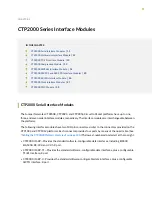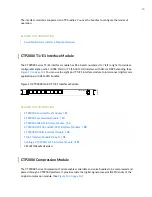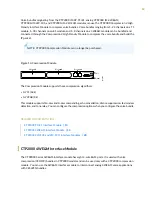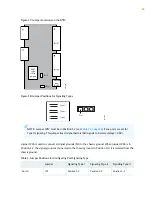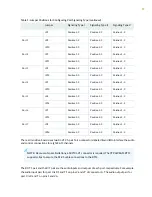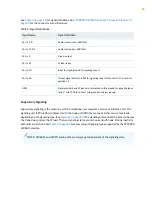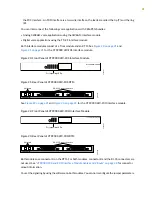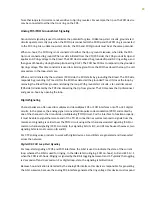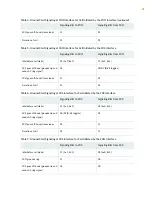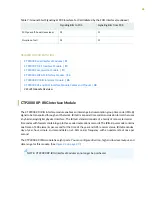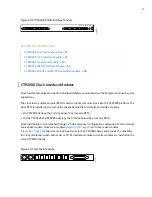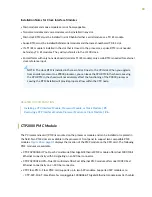
Figure 19: Analog 4WE&M Signaling Types
Type I uses two leads—the E and M leads—for signaling. During inactivity, the E lead is open and the M-lead
is connected to ground. The CTP device connects the E lead to a grounding point to signal off-hook, and
the PBX connects the M lead to the battery (–48 V) to signal off-hook. Note that two signaling units cannot
be connected back-to-back. With type I signaling, the signaling and trunk units must be connected by
means of a common ground. Because the two sides are not isolated, they are susceptible to noise in the
audio channels.
Type II uses four leads—E, SG, M, and SB—for signaling. During inactivity, both the E and M leads are open.
To signal off-hook, the PBX connects the M lead to SB and the CTP device connects the E lead to SG.
Note that two signaling units can be connected back-to-back if the appropriate signaling leads are swapped.
With Type II signaling, the signaling unit and the trunk do not share a common ground.
19
Summary of Contents for CTP2000 Series
Page 1: ...CTP2000 Series Circuit to Packet Platforms Hardware Guide Published 2020 08 31 ...
Page 8: ...1 PART Overview CTP2000 Series Platform Overview 2 CTP2000 Series Interface Modules 11 ...
Page 112: ...Installing SFPs in a CTP2000 Module 102 105 ...
Page 127: ...5 PART Configuration Accessing the CTP2000 Platform 121 ...
Page 144: ...7 PART Troubleshooting Troubleshooting Power Failures 138 Contacting Customer Support 140 ...







